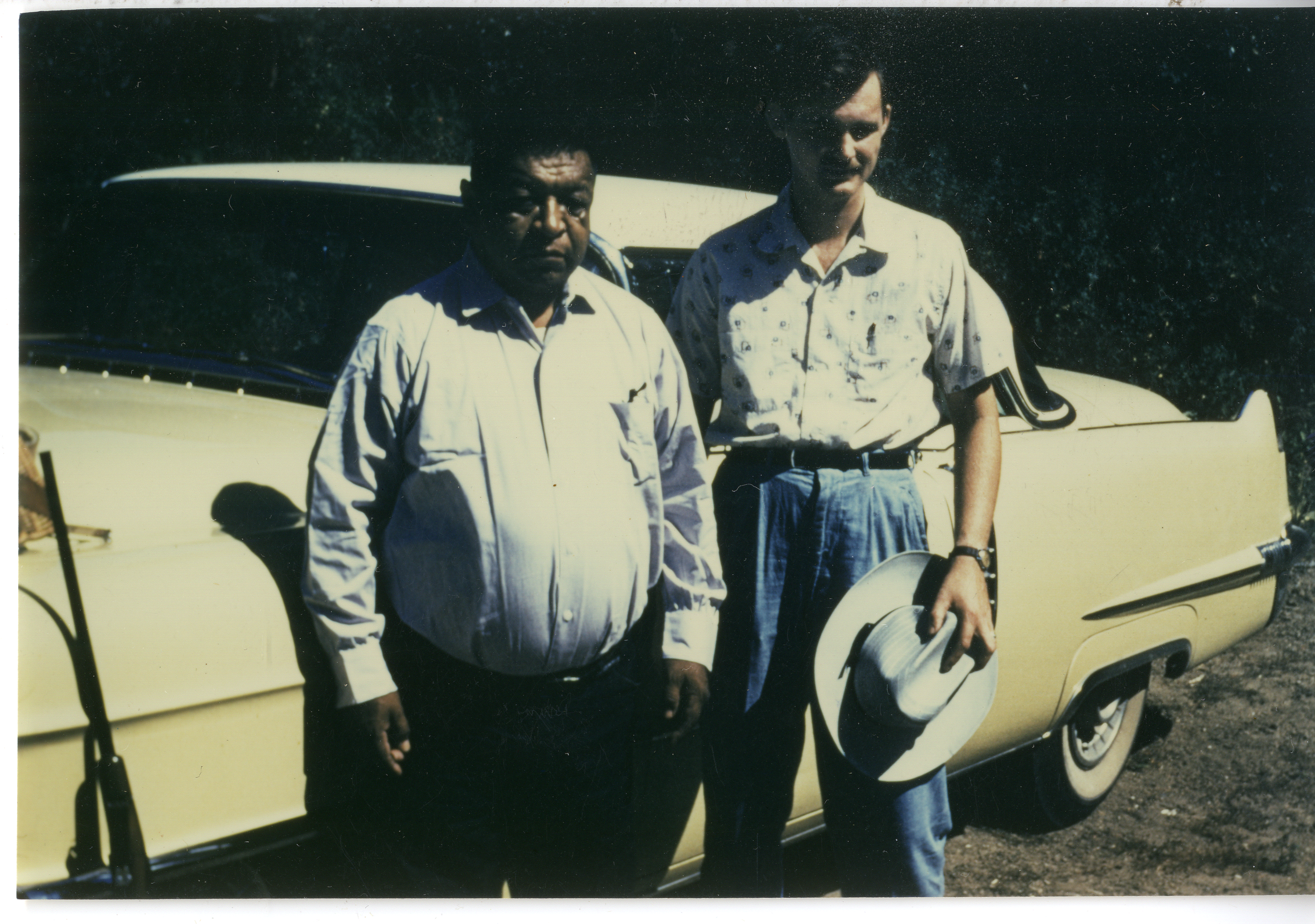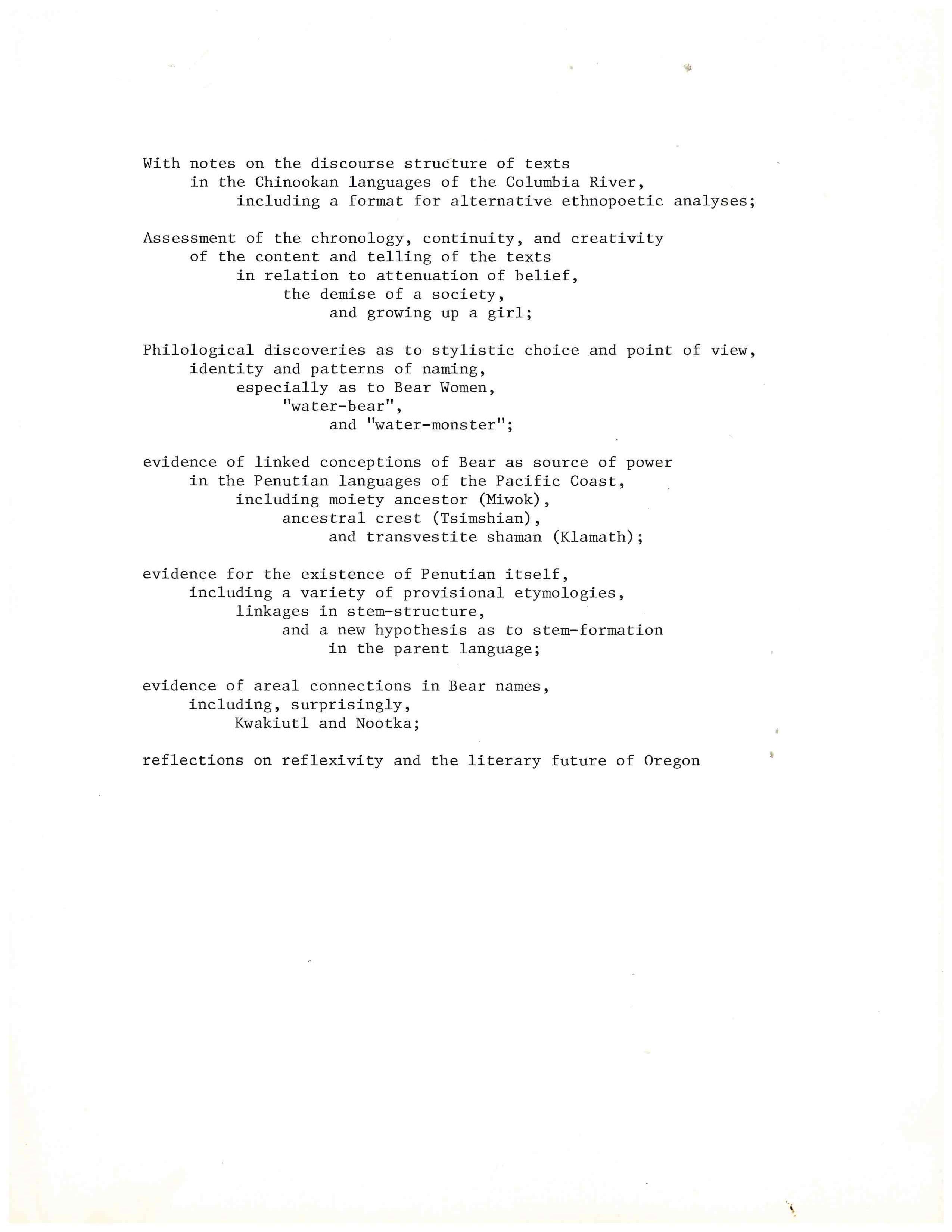Dell Hymes's Works in Progress
In a letter to colleague John Shepherd in 1997, the linguist, anthropologist and folklorist Dell Hymes wrote:
“At the risk of overloading someone who is probably packing to be away, here is a file of my sortie into Korean folktales some 30 years ago. I found the folders with the material last week and made two Xerox copies. (There are also a good many index cards, not included here).
Probably someone in Korea, if not elsewhere, has superseded this by far, but in the spring of 1964, the East Asian Room (I think) at Berkeley knew no more. I found myself absorbed by what could be done quietly there in the week of spring break. An interval of peace. Not everyone understands that work on something you have no need whatever to do can be relaxing. I discovered it about myself one summer when I devoted part of an afternoon to moving a log through the water of Lake Alouette (near Vancouver, B C.).”
This second paragraph explains a great deal to me. Since November 2017 I have been poring through the second subcollection of Dell Hymes’s materials – weeding, organizing, removing staples and entering into the public finding aid. The first subcollection was processed by archivist Ann Reinhardt (now working on the Theodore Dunham Papers) from 2004 to 2005, while Hymes was still alive, and comprises largely his work as founding editor of Language in Society, his role for over two decades. This subcollection is quite different however, containing just about anything and everything Dell had collected and composed over the years. It is too early yet to report fully on how many of what types of materials are here (I have personally gone through around some 50 linear feet so far, yet there are still 45 large boxes completely untouched in our basement), but correspondence, others’ published and unpublished works, and conference attendances are each a significant amount of what we know about.

Dell Hymes’s talk of the relaxation of working “on something you have no need whatever to do” was not merely show – it is embodied in his life’s work, in his collection. A pioneering scholar in several fields relating to language and North America – including early theorizing of the terms “linguistic anthropology” and “the ethnography of speaking” – by the time of Hymes passing in 2009 he had over 700 publications to his name (see a bibliography of publications to 2005 here), and the event resulted in four field-specific obituaries and one in the New York Times. Yet this is not reflective enough of the true extent of his work – a statement true of many linguists whose work with the raw data produces little recognition compared to the distilled articles derived from it.
Perhaps the most outstanding example of Hymes’ unpublished work is “Bears That Save and Destroy: Faces of Feminine Power in a Native American Community in Oregon (or) Guardian Spirit, Grizzly Ogress, Kangaroo: Three Texts and Stages of a Chinookan Belief.” At 373 pages at its longest and 15 years in production, Hymes offers this description in the preface:
“This study of a “monster” became one. It began as a hurried contribution to a festschrift. The three central texts, already analyze, were to be presented and briefly discussed in order to honor the sudden request. A week would suffice […] In the event the study has become a small monograph.”
The festschrift contribution was produced, but Hymes mentions how discussion with an old Wasco friend (probably Hiram Smith, with whom he conducted much fieldwork on and around the Warm Springs Reservation in Oregon) caused his thoughts to snowball, and apparently the sheer scope of the possible work became prohibitive. One version of the book includes this lengthy description of the contents:

Dell Hymes’s keen eye for pattern – in the above, interweaving ethnopoetics, folkloristics, onomastics and comparative linguistics – was applied seemingly everywhere he saw it: in publications by previous scholars (especially Franz Boas and Edward Sapir); in submissions by his students of oral histories of rural Georgia; and in response to work in various states by his contemporaries, often sent in long correspondence, sometimes solicited and sometimes not. The texts above were just a few of dozens that he would apply his trademark revisions to, presenting the oral cultures of Indigenous North America in a way that highlighted their structures and complexities far more explicitly than in efforts by his predecessors.
One of the great aspects of processing a collection from scratch is the narrative that emerges about the creator’s life and habits. Dell Hymes’s collection here at the APS tells of a scholar happy and willing to dig deep and broad in search of connections, with often no guarantee of an outcome that others would hear about. Collections arriving largely unfiltered like this – complete with correspondence, scrawled notes, and abundant drafts – tell us so much more about the depositor than their publications alone can.
